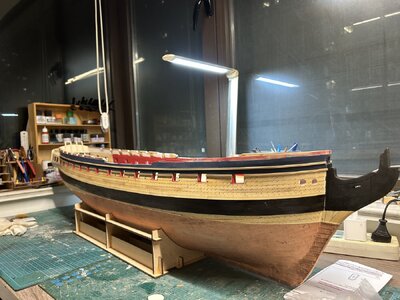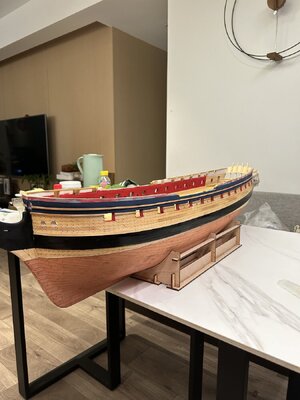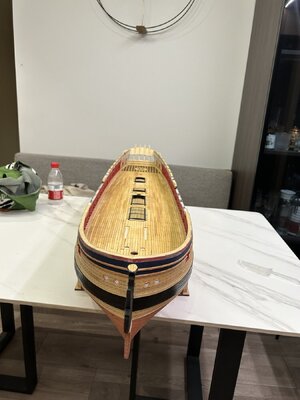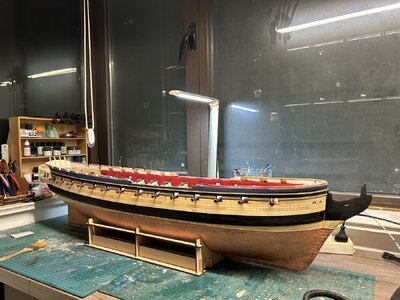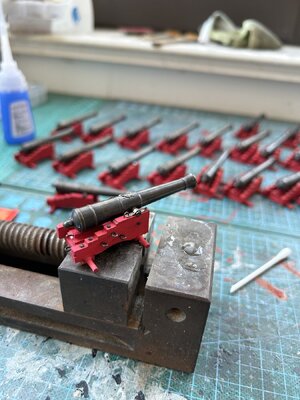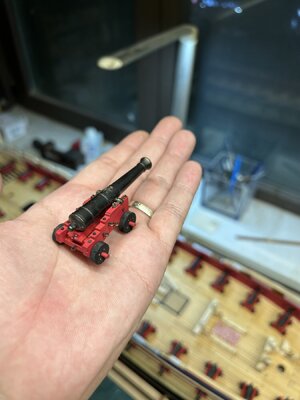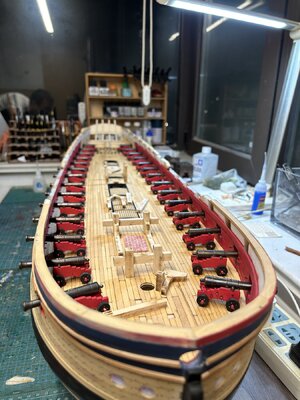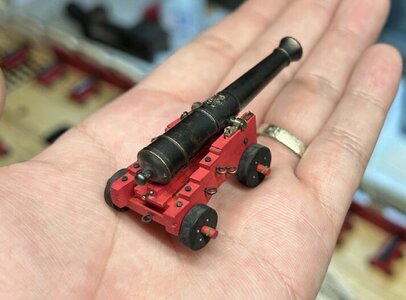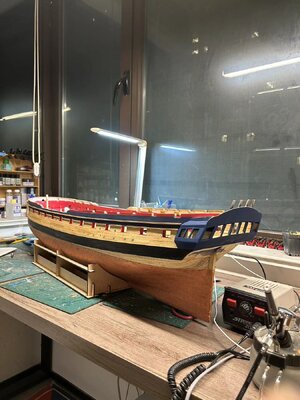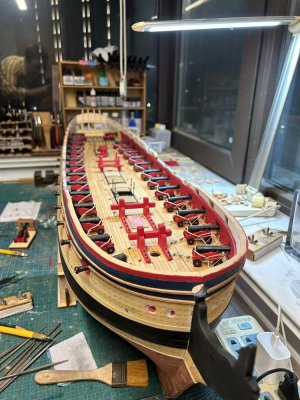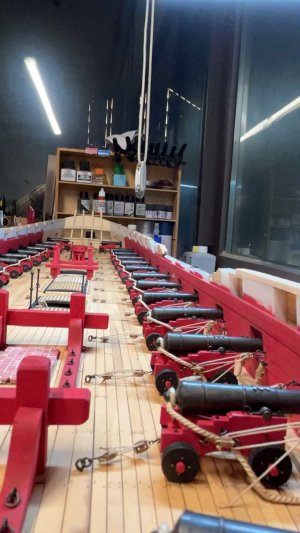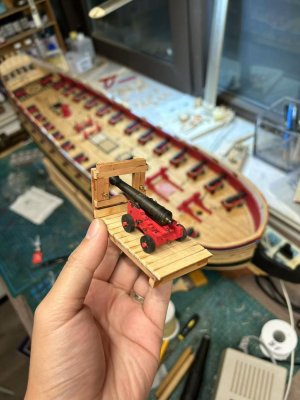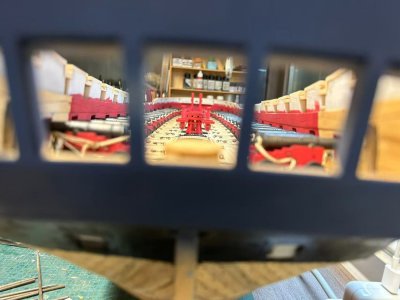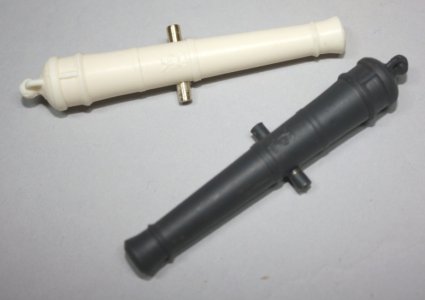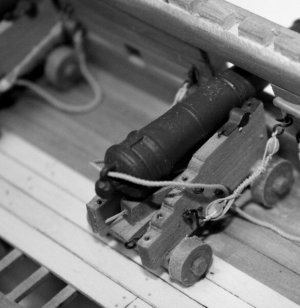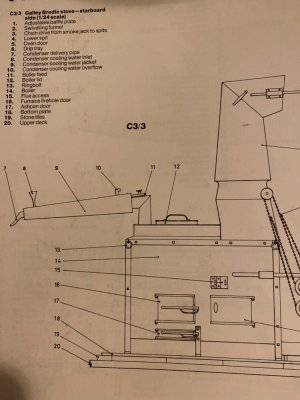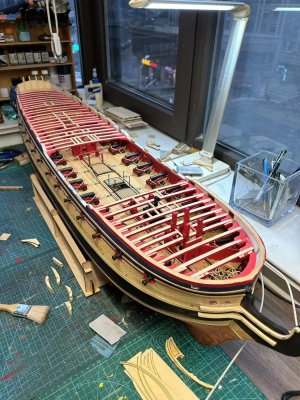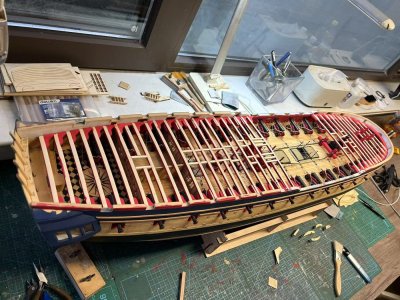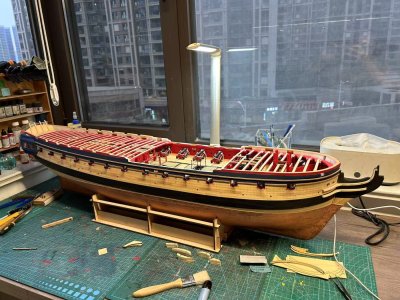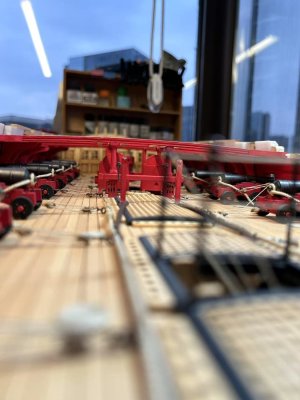The blackening of your guns is looking very good - very good appearance
-

Win a Free Custom Engraved Brass Coin!!!
As a way to introduce our brass coins to the community, we will raffle off a free coin during the month of August. Follow link ABOVE for instructions for entering.
You are using an out of date browser. It may not display this or other websites correctly.
You should upgrade or use an alternative browser.
You should upgrade or use an alternative browser.
HMS Diana 1:48 by Modelship Dockyard -Build log
- Thread starter fj3131030
- Start date
- Watchers 20
-
- Tags
- diana modelship dockyard
I gave in and decided that copper would be the best black.The blackening of your guns is looking very good - very good appearance
I see you have added a monogram to your brass guns. How did you do that? Is it an applique?
My thanks! Beautiful work!
My thanks! Beautiful work!
Very useful advice I have cut shortVery good results with the carriages
Mabye only the axles are slightly too long - I would reduce by 50% (like shown with green line)
View attachment 463207
How did you make the small nails in the wheels - looking very good
Yes, the emblem on the gun is an etched sheet, which was blackened and then pasted on.I see you have added a monogram to your brass guns. How did you do that? Is it an applique?
My thanks! Beautiful work!
Long time no see everyone. I didn't model for a while because my wife was pregnant. Now continuing to make
Hallo @fj3131030HMS Diana is a Artois Class fifth rate frigate built in 1794 at Deptford Dockyard, to cope with the out break of war with France.
She have with 38 nominal guns, however she have acturally 28 of 18 pounders (gun deck), 4 of 9 pdrs, and 14 32 pdrs carronades.
As a frigate she have been to service in England waters, Mediterranean, West Indies, and South America. And have capetured several ships that mainly privateers. She was sold to the Dutch navy after war period in 1815.
Kit designed by Modelship Dockyard, based on the NMM drawings of the Artois class. This kit is currently only avaliable for tailor made as being limited by the production capacity.
we wish you all the BEST and a HAPPY BIRTHDAY

Enjoy your special day
I just noticed you have brick work where the Brodie stove would sit. This brings up a question, hope someone has the answer...... At some point in the 18th century the stove sat on an iron plate or sometimes stone rather than on brick work. I know the modern-day Victory shows stone rather than brick or iron but is this how it was most commonly done in the late 18th and early 19th century or were iron plates used instead most of the time? There is a good discussion on this on HMS Fly's build log of Diana but there is nothing definitive as to when brick flooring was eliminated, and stone or iron came into use.
Allan
Allan
Last edited:
- Joined
- Dec 3, 2022
- Messages
- 1,547
- Points
- 488

I understand your idea. In fact, I thought so before. It was not until I made Lexington that I changed my mind. The manufacturer's reply to me was very simple. If you want to restore it completely, why not make a POF model? Since POB has better effects, why not choose a simpler production method?
I initially shared @Submarinerblue ’s dislike of the ‘plastic kit’ aspects of the build but I can’t find a way to refute your manufacturer’s logic. If we allow plywood and resin glues, paint with acrylics and rig with polyester thread, why not make use of 3D mouldings underneath? Why on Earth would I want to make construction both more difficult and less accurate?
You have single-handedly dragged me into the 21st century.
Excellent work. I like it. neat and precise everything. One piece of advice, how to finish the process when you don't need to take the model in your hands - use a copper cleaner to remove fingerprints and stains. (first try it on a sample). This way the surface will be uniform and will darken evenly.



